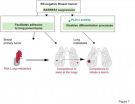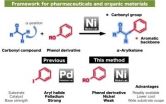(Press-News.org) The European Medicines Agency (EMA) receives comprehensive clinical study data from drug manufacturers. These data form the basis for the decision on the approval of new drugs. To make this information available to researchers and decision-makers, EMA issued a draft policy in 2013 for the publication of clinical study data, in which extensive data transparency was planned.
Besides other interested parties, the German Institute for Quality and Efficiency in Health Care (IQWiG) was intensely involved in the subsequent consultations. The result of these consultations is all the more disappointing; in particular the draft on the conditions of use for the EMA interface via which anyone should be able to access the data.
Only reading allowed
Last week it became known what EMA would like to decide on 12 June 2014. According to EMA's plans, interested parties will only be allowed to access the data in a "view on screen only" mode. They will not be permitted to download, save, edit, photograph, print, distribute, or transfer the information. These conditions make any scientific analysis of clinical study data, for instance, within the context of benefit assessments of drugs, absolutely impossible. For benefit assessments, not only an enormous amount of data need to be viewed (often several thousand pages), these data must also be annotated and saved, pooled from different studies, analysed statistically, and shared between researchers.
The good into the pot, the bad into the crop?
In addition, according to the draft, within the context of market approval applications drug manufacturers will be able to submit two versions of a clinical study report to EMA: a complete one, by means of which EMA will decide on approval, and an incomplete one for the public.
So far it had been discussed that individual patient data, which may allow patients to be identified, will be deleted from the study reports. Now this step has been extended to cover study results, and the requirements are so vaguely worded that the extent of the redaction of the report is difficult to predict.
Complete data are indispensable
"In view of our experience with industry in the last years, this procedure is alarming", says Jürgen Windeler, IQWiG's Director. "At the same time, our experience with early benefit assessments shows how valuable complete study data are for the discussions on new drugs. We are thus surprised by this sudden step backwards, which from our point of view is simply incomprehensible."
Beate Wieseler, Head of IQWiG's Drug Assessment Department, adds: "Neither journal publications nor other publicly accessible documents reach the information content of complete clinical study data, as available at EMA. We therefore welcomed the EMA draft of 2013 as a major step in the right direction. In contrast, the surprising revision that has now been announced represents no progress whatsoever compared to the status quo: we will neither receive all of the data nor will we be able to estimate how much of the data has been withheld and how representative the remaining data are."
Redaction of quality-of-life data is possible
For example, EMA deems deletion of information to be legitimate in cases of results on exploratory outcomes, which are not supportive for the approval decision. However, such study results are regularly considered by IQWiG in its assessments, as they often contain analyses of patient-relevant outcomes such as health-related quality of life, which are often not reported in journal publications.
Wieseler states: "We are talking about studies in people who participated in a clinical study because they hoped that with the information gained, better treatments would be developed. This information can only be used to improve patient care if it is publicly available to all. These study data are not only needed by IQWiG, but also by other researchers who prepare systematic reviews or medical societies who prepare guidelines for the treatment of patients."
Comment in the British Medical Journal
Wieseler and her colleagues have summarized their criticism of the new EMA policy in a rapid response in the British Medical Journal. In this comment they make clear that the current plans deviate strikingly from EMA's paradigm change towards more data transparency announced in 2012. The EMA data made available in the planned manner can basically not be called published, as "data we cannot work with are still hidden – even if we see them on a screen".
INFORMATION: END
Just look, but don't touch: EMA terms of use for clinical study data are impracticable
Data are only allowed to be viewed on screen / Pre-censorship by drug manufacturers
2014-05-27
ELSE PRESS RELEASES FROM THIS DATE:
The future of sweet cherry in Australia
2014-05-27
AUSTRALIA -- Predicted variations in global climates have fruit producers trying to determine which crops are best suited to weathering future temperature changes. Extreme high-temperature events are expected to become more frequent, and predictive models suggest that the global mean surface air temperature will rise by as much as two degrees by the middle of the 21st century. Higher temperatures could have an impact on the duration of critical "winter chill" periods needed for successful fruit production, potentially altering growing strategies. According to the authors ...
Differences in phenolic makeup of indigenous rose species and modern cultivars
2014-05-27
LJUBLJANA, SLOVENIA – The leaves and petals of roses are valued for their medicinal and aesthetic uses around the world. A new study identified specific phenolic compounds found in the petals of indigenous rose species and compared them with the phenolic profiles of modern rose cultivars to determine differences in the makeup of roses traditionally used for medicinal purposes and those varieties cherished for aesthetic qualities. According to the results, distinct differences exist in the distribution of leaf phenolic compounds, especially between indigenous rose species ...
Researchers identify a new suppressor of breast metastasis to the lung
2014-05-27
A study published today in EMBO Molecular Medicine reveals that the loss of function of the gene RARRES3 in breast cancer cells promotes metastasis to the lung.
The research, headed by Roger Gomis, ICREA Professor at the Institute for Research in Biomedicine (IRB Barcelona), is the result of a collaboration between two IRB labs and Joan Massagué, at the Memorial Sloan Kettering Cancer Center in New York.
The scientists demonstrate that RARRES3 is suppressed in estrogen receptor-negative (ER-) breast cancer tumours, thus stimulating the later invasion of the cancer cells ...
The science of school lunch
2014-05-27
In terms of ambience, Charlotte Central's cafeteria is -- well, conjure up your own elementary school lunch experience. There's more than one reason to run to recess. But on a recent visit to observe a group of researchers from UVM's Johnson Lab, the lunch ladies were serving up something more likely to be found on a restaurant menu: risotto with mushrooms and peas. It's the result of a host of programs by schools around Vermont to offer more tempting choices -- with locally sourced ingredients when possible, including herbs and vegetables from the playground garden -- ...
New University of Colorado study illuminates how cancer-killing gene may actually work
2014-05-27
Scientists armed with a supercomputer and a vast trove of newly collected data on the body's most potent "tumor suppressor" gene have created the best map yet of how the gene works, an accomplishment that could lead to new techniques for fighting cancers, which are adept at disabling the gene in order to thrive.
Scientists from the University of Colorado Cancer Center and the University of Colorado Boulder used a new technology to tease out how the p53 gene—which is responsible for recognizing damaged DNA in cells and then marking them for death—is actually able to suppress ...
Why retailers need to pay attention to the smell of their stores
2014-05-27
This news release is available in French. Montreal, May 27, 2014 — Retail stores overflowing with merchandise can make consumers feel claustrophobic rather than ready to spend. But the recent move towards open, minimally stocked spaces can leave them feeling just as anxious.
The solution to this shopping conundrum may be smell, as new research from Concordia University shows.
In a study recently published in the American Journal of Business, researchers from the university's John Molson School of Business (JMSB) suggest that, when diffused in retail environments, ...
Imaging scientists develop a better tool for tracking MS
2014-05-27
Imaging scientists at Western University's Robarts Research Institute (London, Canada) have developed a better way to track the progression of Multiple Sclerosis (MS) from its earliest stages. Led by Ravi Menon, PhD, the researchers used what's called "Quantitative Susceptibility (QS) Magnetic Resonance Imaging (MRI)," to measure damage in specific areas of the brain which the study showed to be common to all patients. The findings are published in advance online, in Radiology.
"In MS research, there is something we call a clinical-radiological paradox. When ...
Steroids prescribed in the ICU linked to delirium
2014-05-27
New Johns Hopkins research suggests that critically ill patients receiving steroids in a hospital's intensive care unit (ICU) are significantly more likely to develop delirium. Results of their research, they say, suggest minimizing the use of steroids could reduce delirium in the ICU.
While it usually goes away after a few days, studies show delirium in the ICU has a long-term impact. It has been associated with worse functional recovery and cognitive impairments of a magnitude consistent with moderate traumatic brain injury or mild Alzheimer's disease.
Overall, up ...
HSP90 is a potential target for ameliorating skeletal muscle abnormalities in PD
2014-05-27
Heat shock protein (HSP90) has been suggested to be involved in neuronal protein misfolding and accumulation in Parkinson's disease (PD) brains leading to dopaminergic neuronal death and the eventual dopamine depletion. Therefore, HSP90 has been suggested as a therapeutic target in PD. Dr. Muhammed Al-Jarrah and co-workers from Jordan University of Science and Technology (JUST) point out exercise training significantly inhibited HSP90 overexpression in the soleus and gastrocnemius in PDe rats, which is a potential therapeutic target for ameliorating skeletal muscle abnormalities ...
A new 'Kabuto-like' nickel catalyst forms bioactive frameworks from phenol derivatives
2014-05-27
Researchers at ITbM, Nagoya University developed a new nickel catalyst with a "Kabuto-like" structure that was found to catalyze the cross-coupling reaction between carbonyl compounds and readily available phenol derivatives, to form alpha-arylketones, which are found in many biologically active compounds (Kabuto = a helmet worn by Japanese samurai).
Nagoya, Japan – Professors Kenichiro Itami and Junichiro Yamaguchi of the Institute of Transformative Bio-Molecules (WPI-ITbM) and graduate students Ryosuke Takise and Kei Muto of Nagoya University have succeeded in developing ...
LAST 30 PRESS RELEASES:
Blocking a key inflammatory pathway improves liver structure and vascular function in cirrhosis, study finds
Continuous spread: Raccoon roundworm detected in nine European countries
HKUST Engineering researchers developed a novel photodetector to enhance the performance of on-chip light monitoring
Strategic river sensors could have forewarned of Texas Camp flood disaster
Drone sampling of whale breath reveals first evidence of potentially deadly virus in Arctic
Roman soldiers defending Hadrian’s Wall infected by parasites, study finds
Pinochet’s prisoners were tormented with music but still found solace in it, a new book reveals
Fertility remains high in rural Tanzania despite access to family planning
AI-assisted device can improve autism care access
Kinetic careers
Uncovering how parasitic plants avoid attacking themselves to improve crop resistance
Nanoparticle vaccine strategy could protect against Ebola and other deadly filoviruses
Study finds brain care score can predict risk of stroke across racial groups
Key lung immune cells can intensify allergic reactions
Do hormones explain why women experience more gut pain?
New materials conduct ions in solids as easily as in liquids
Breakthrough of the Year: Renewable energy begins to eclipse fossil fuel-based sources
LLM use is reshaping scientific enterprise by increasing output, reducing quality and more
Introducing LightGen, a chip for ultra-fast, ultra-efficient generative AI
Astronomers see fireworks from violent collisions around nearby star
ACC/AHA issue new guideline on managing congenital heart disease in adults
Cosmic crash caught on camera
Is talented youth nurtured the wrong way? New study shows: top performers develop differently than assumed
Ants: An untapped resource in the development of antibiotics?
Archaeologists use AI to create prehistoric video game
Mitochondria migrate toward the cell membrane in response to high glucose levels
Tiny viral switch offers hope against drug-resistant bacteria
Most parents aware of early peanut introduction guidelines, but confused about details
HPV vaccine can protect against severe lesions of the vulva and vagina
Virtual care provision and emergency department use among children and youth
[Press-News.org] Just look, but don't touch: EMA terms of use for clinical study data are impracticableData are only allowed to be viewed on screen / Pre-censorship by drug manufacturers



